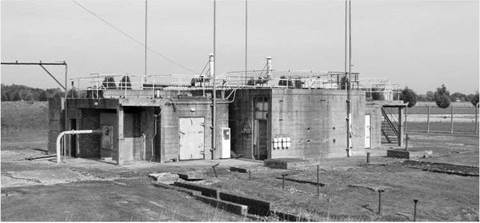Rocket Propulsion Establishment (RPE) at Westcott
Like other post-war establishments such as Harwell and Aldermaston, Westcott was originally an RAF airfield before being taken over in 1946 as the Guided Projectile Establishment. In 1947 its status changed to the Rocket Propulsion Department of RAE, and then in 1958 it became the Rocket Propulsion Establishment.
A good deal of work was done on solid motors (all named after birds, since the Superintendent was a keen ornithologist), but in addition, there was a good deal of early work done on liquid motors using HTP involving German engineers who had come to Britain at the end of the war. These were the Alpha, Beta and Gamma series of motors. The Delta was a low-key liquid oxygen/kerosene programme, which became rather pointless once Rolls Royce began development of the RZ 1 and RZ 2 chambers. There was also a very considerable liquid hydrogen programme, producing some sophisticated chambers which could almost have been fitted directly into a rocket stage without much further work. In addition, P site was used by Rolls Royce in some early firings of the RZ 1 and RZ 2 before Spadeadam became available.
One of the major projects of the 1950s was the 1/6th scale silo, which must have been quite an impressive sight when the motors were fired inside the tube. Nothing remains of the site today, although there are still hexagonal pieces of concrete which formed the walls of the model silo to be found to this day.
|
Figure 2. Test stands for rocket motors at Westcott as seen in 2010. |
Spadeadam in Cumbria was chosen as the site to test and develop the Blue Streak engines, and here Blue Streak vehicles were assembled for static firing before shipment to Australia. Rolls Royce ran the site as an agency.
The engine test area at Prior Lancy Rigg consisted of four concrete stands into which the engines could be mounted for test firing. Three remain, copied from a Rocketdyne design used at their California Santa Susana Field Laboratory site; the fourth has been demolished. This last and lost stand seems to have been built to a different design, using an innovative application of pre-stressed concrete to contain liquid oxygen spills.
Two static firing stands themselves stood at Greymare Hills and were large enough to accommodate a full Blue Streak missile. All firings were controlled from command centre bunkers connected to the stands by tunnels or surface cabling ducts.
After the demise of ELDO, Spadeadam was taken over by the RAF. Its primary purpose today is to provide a location for teaching of electronic warfare to RAF and other NATO aircrew.











